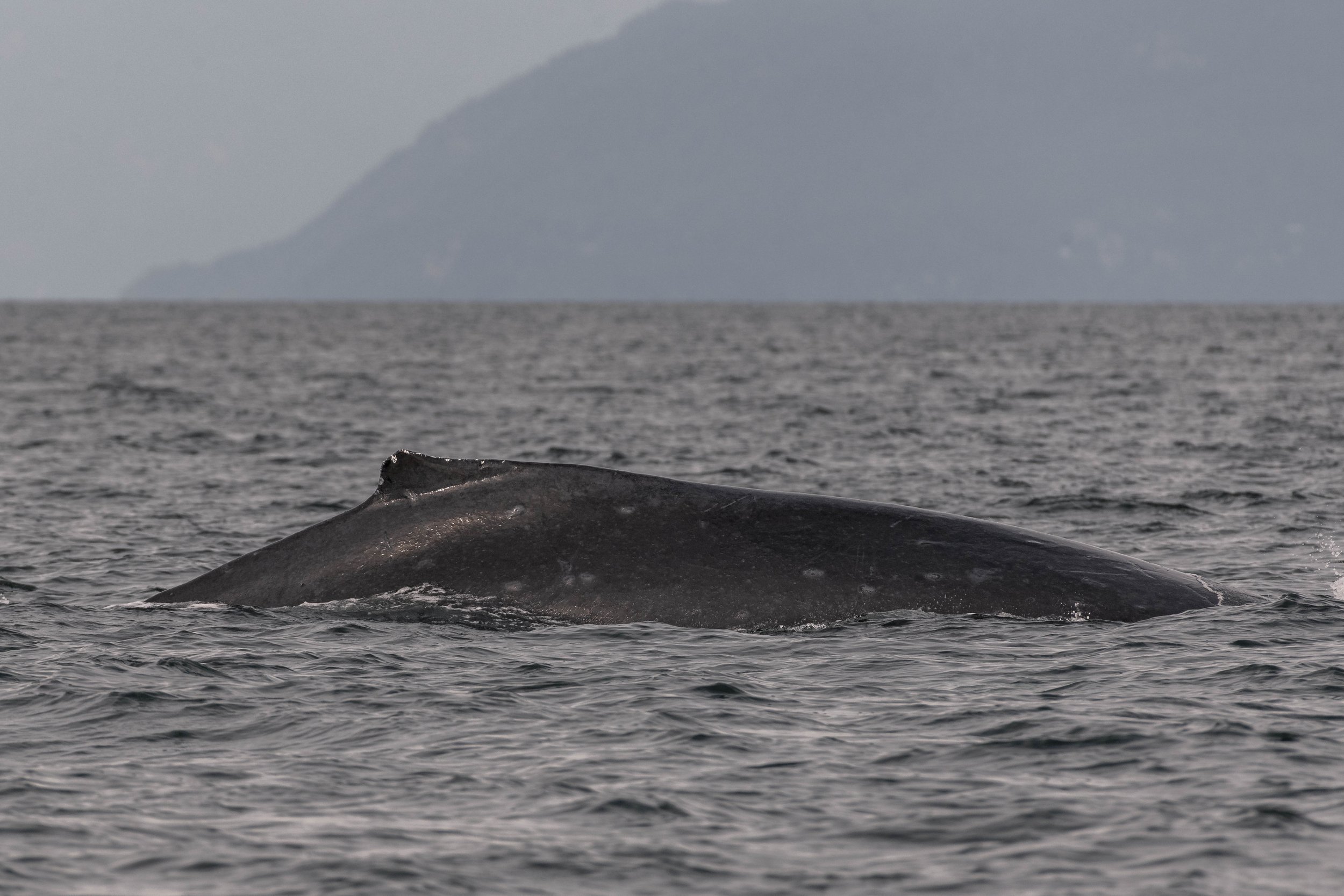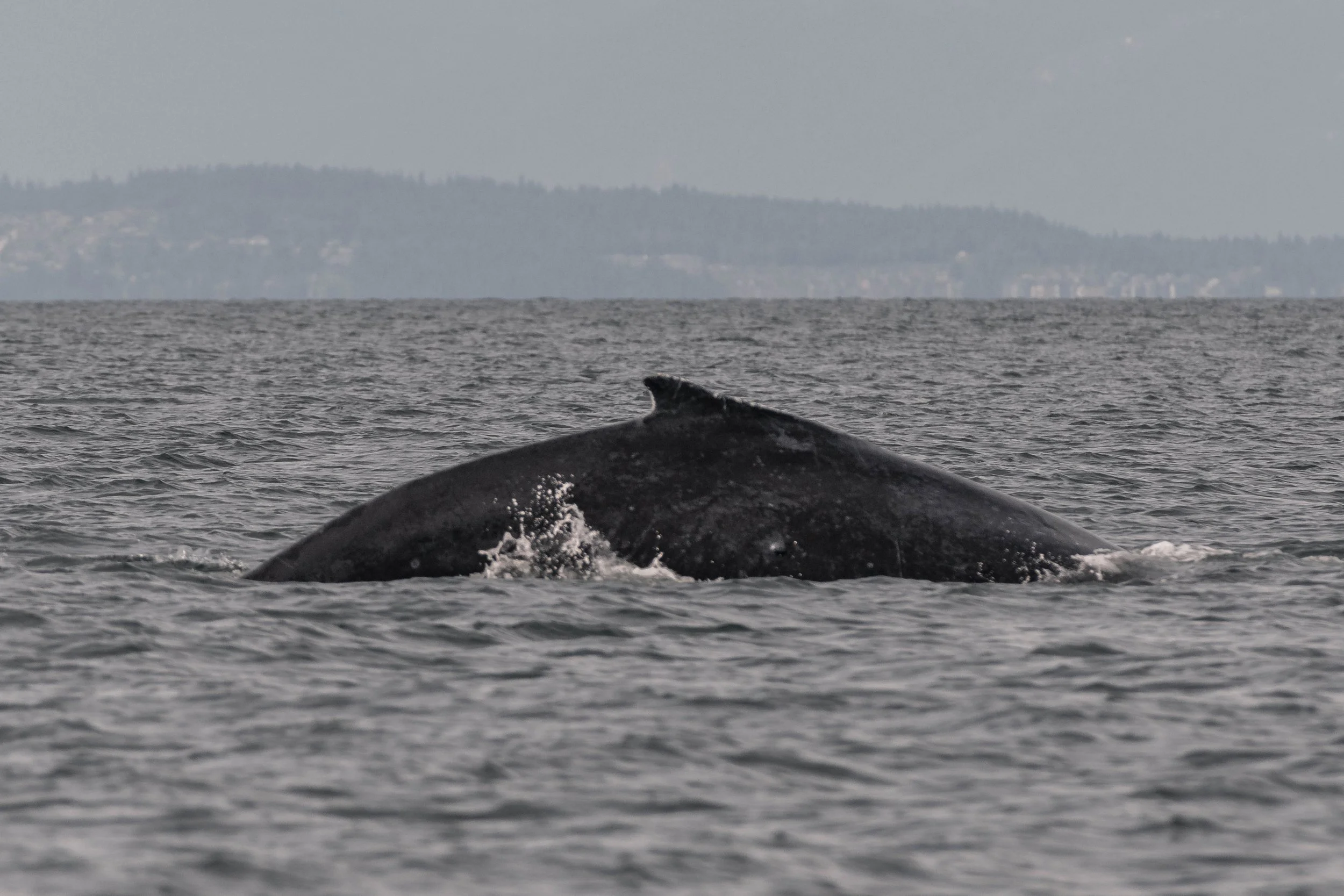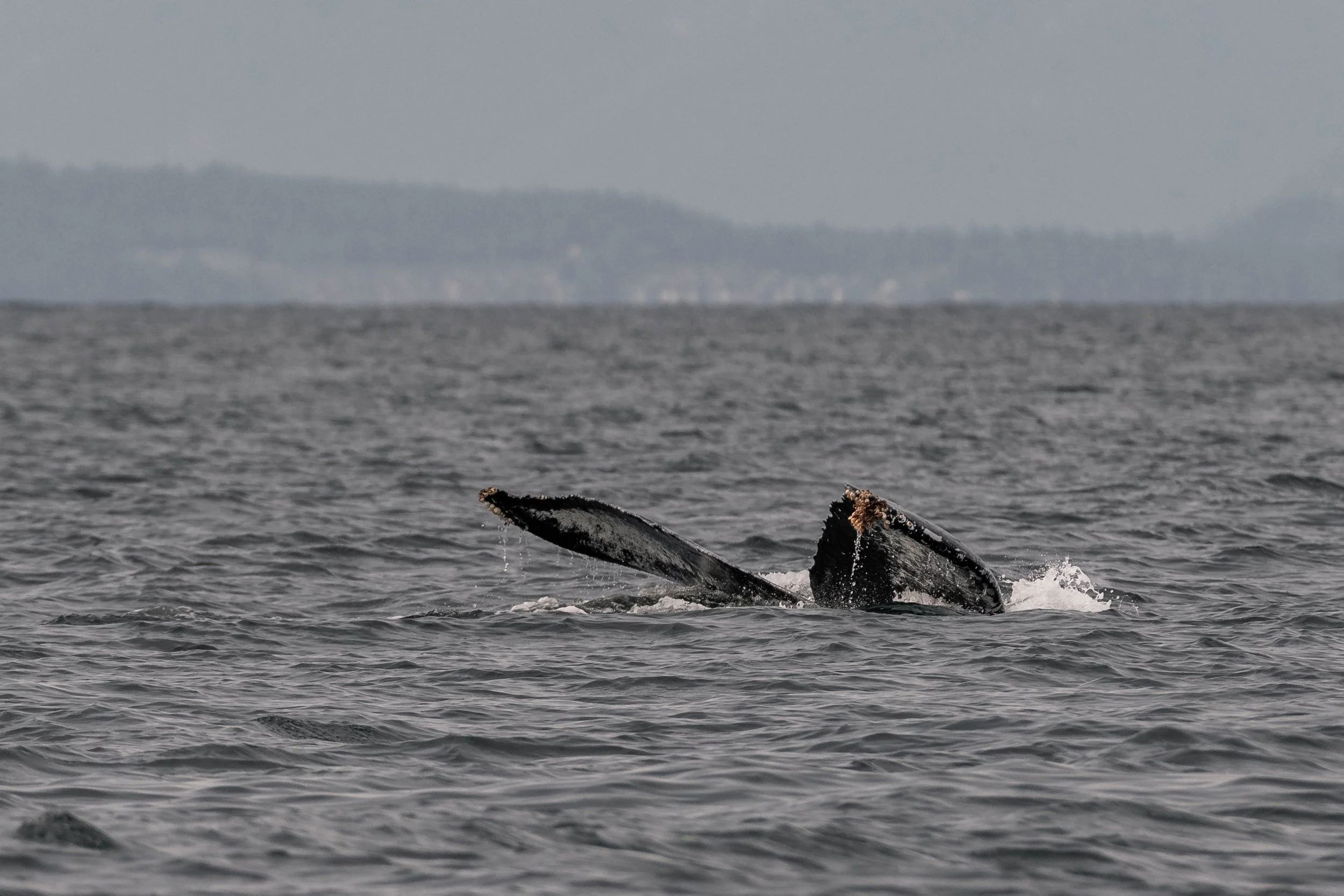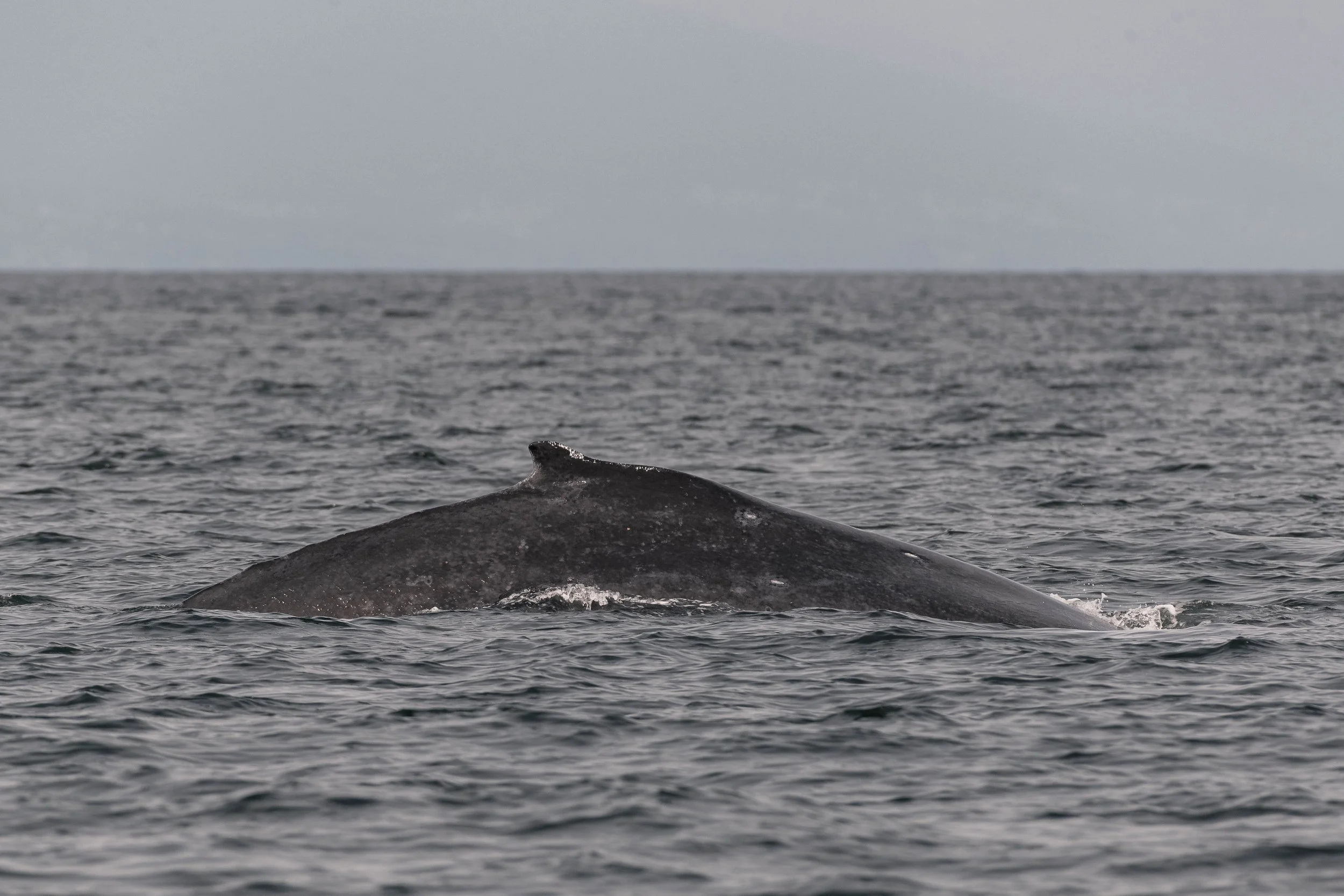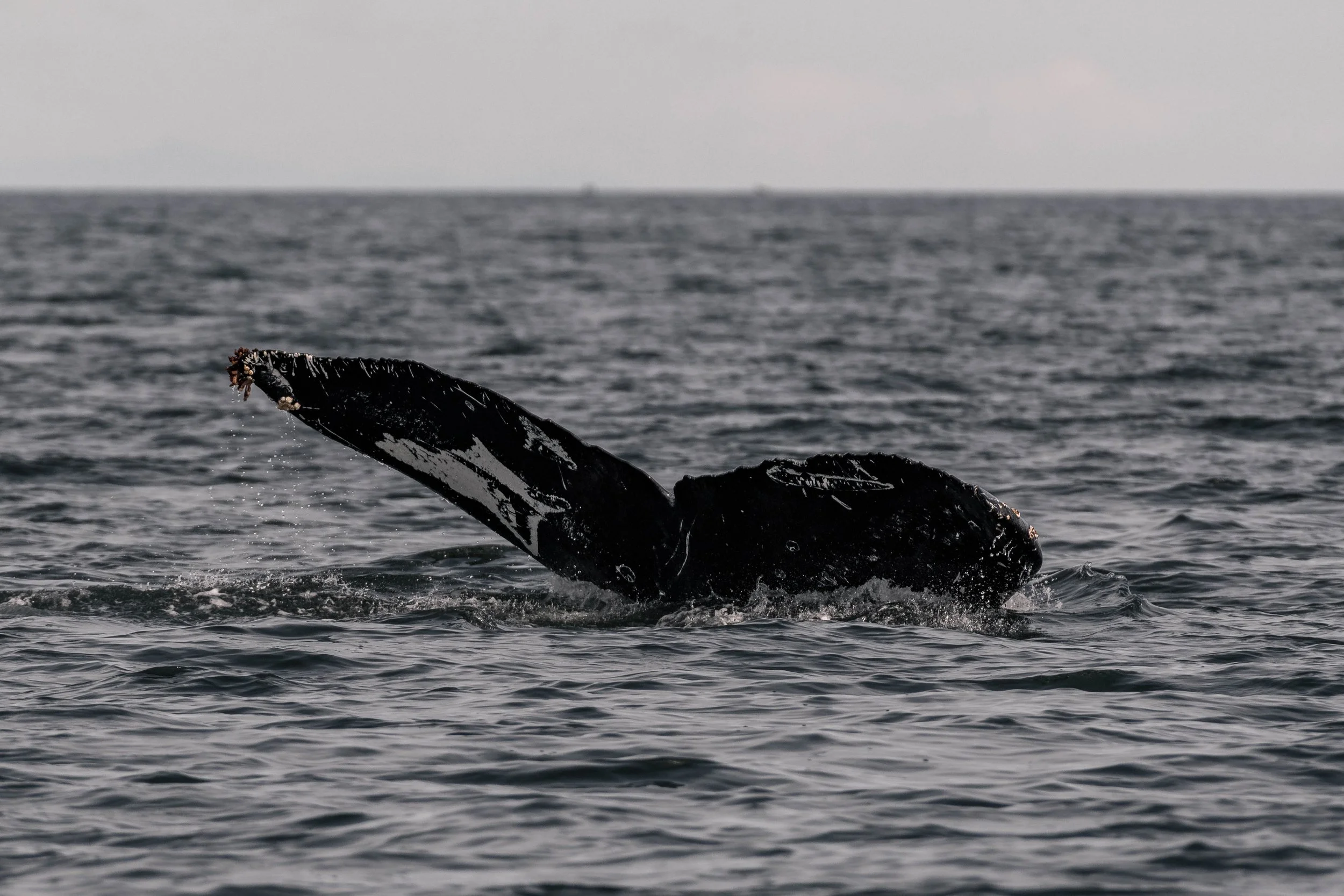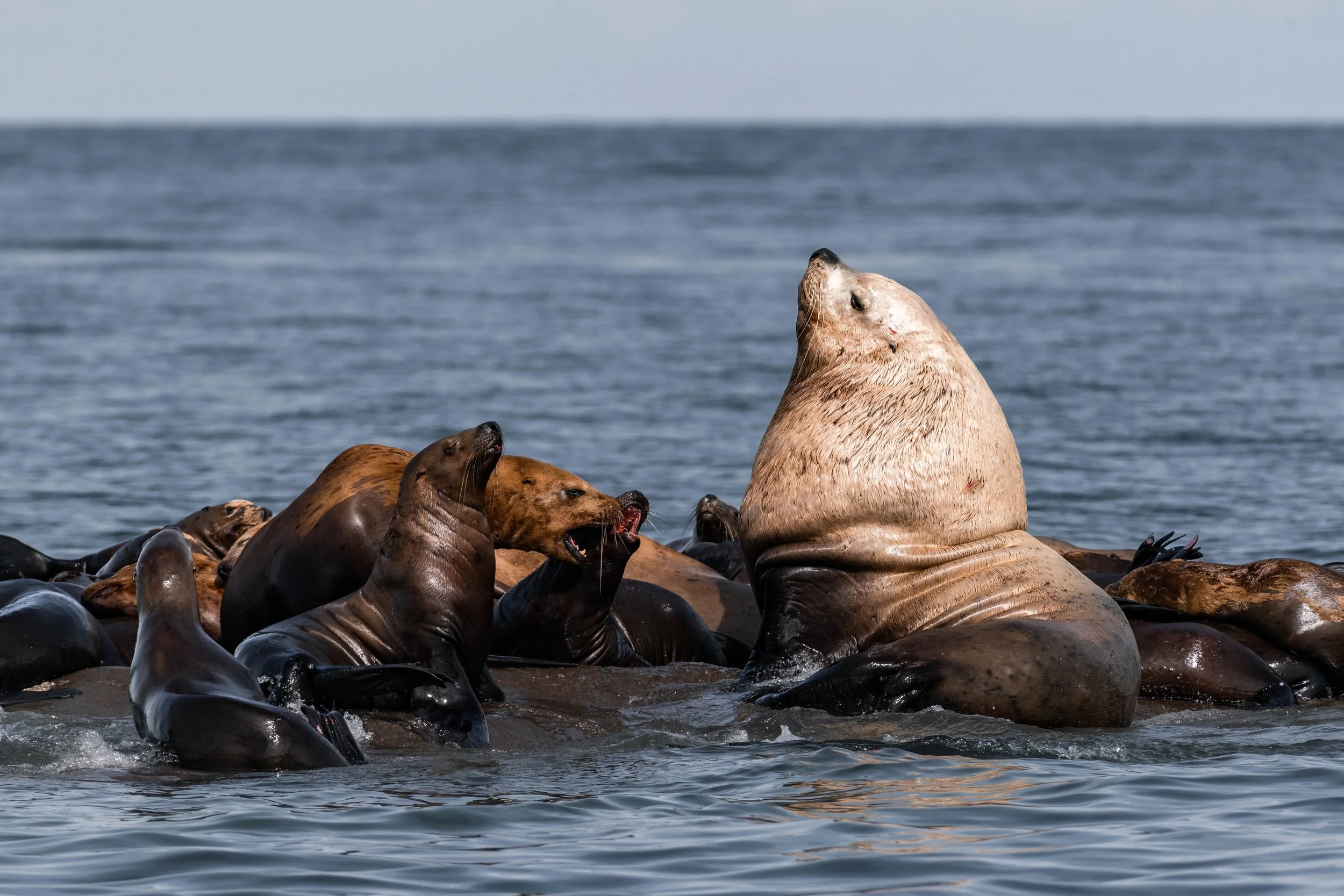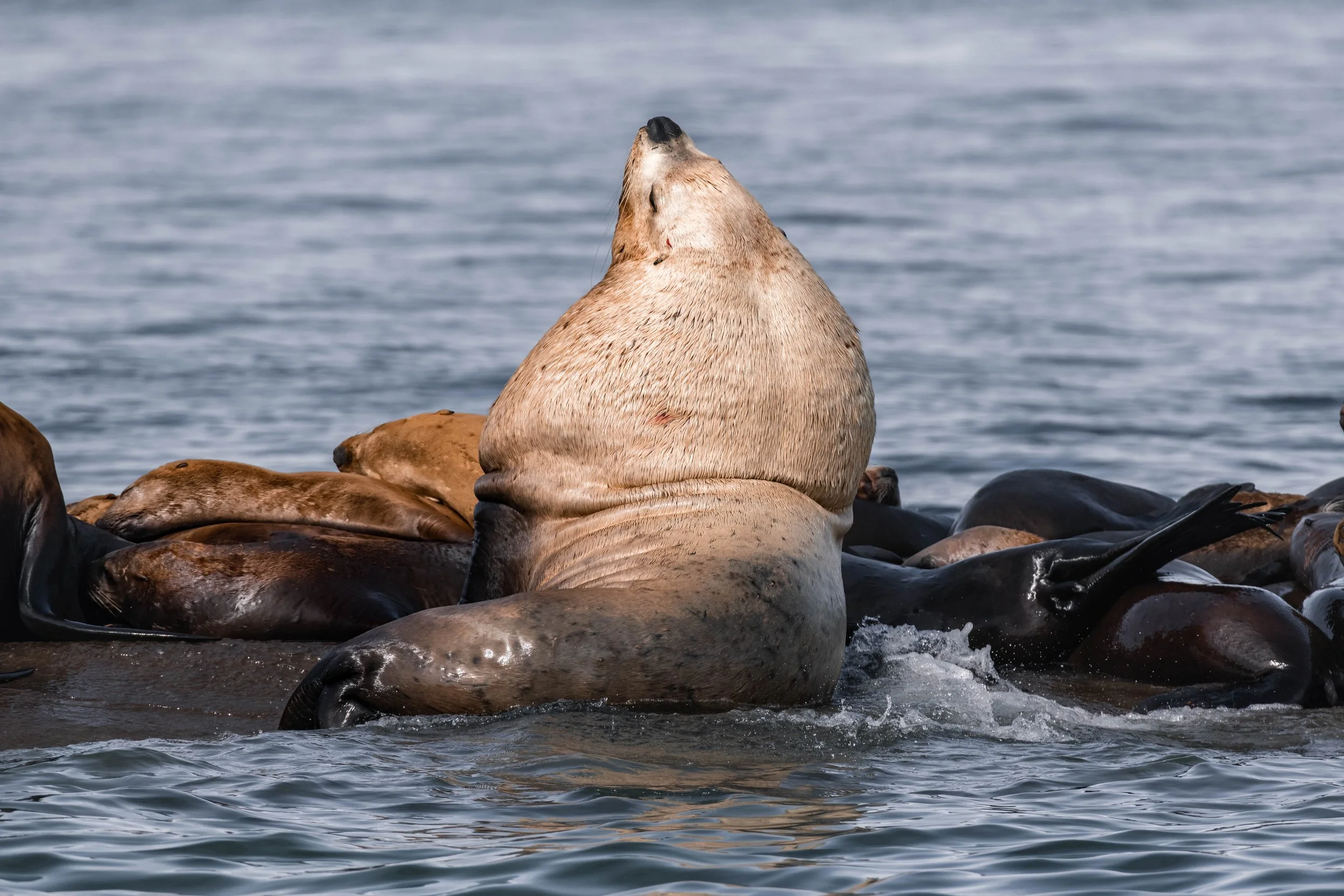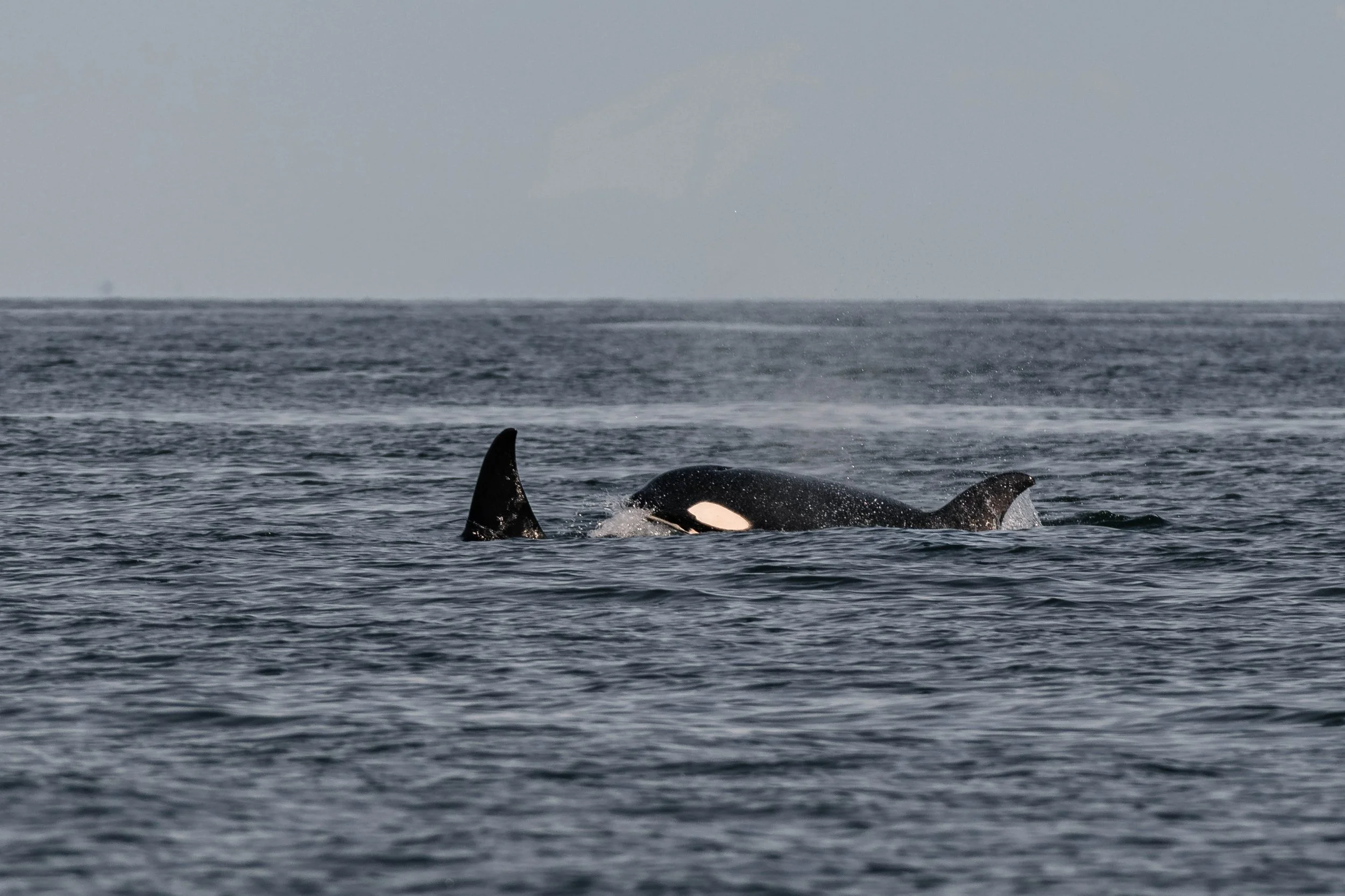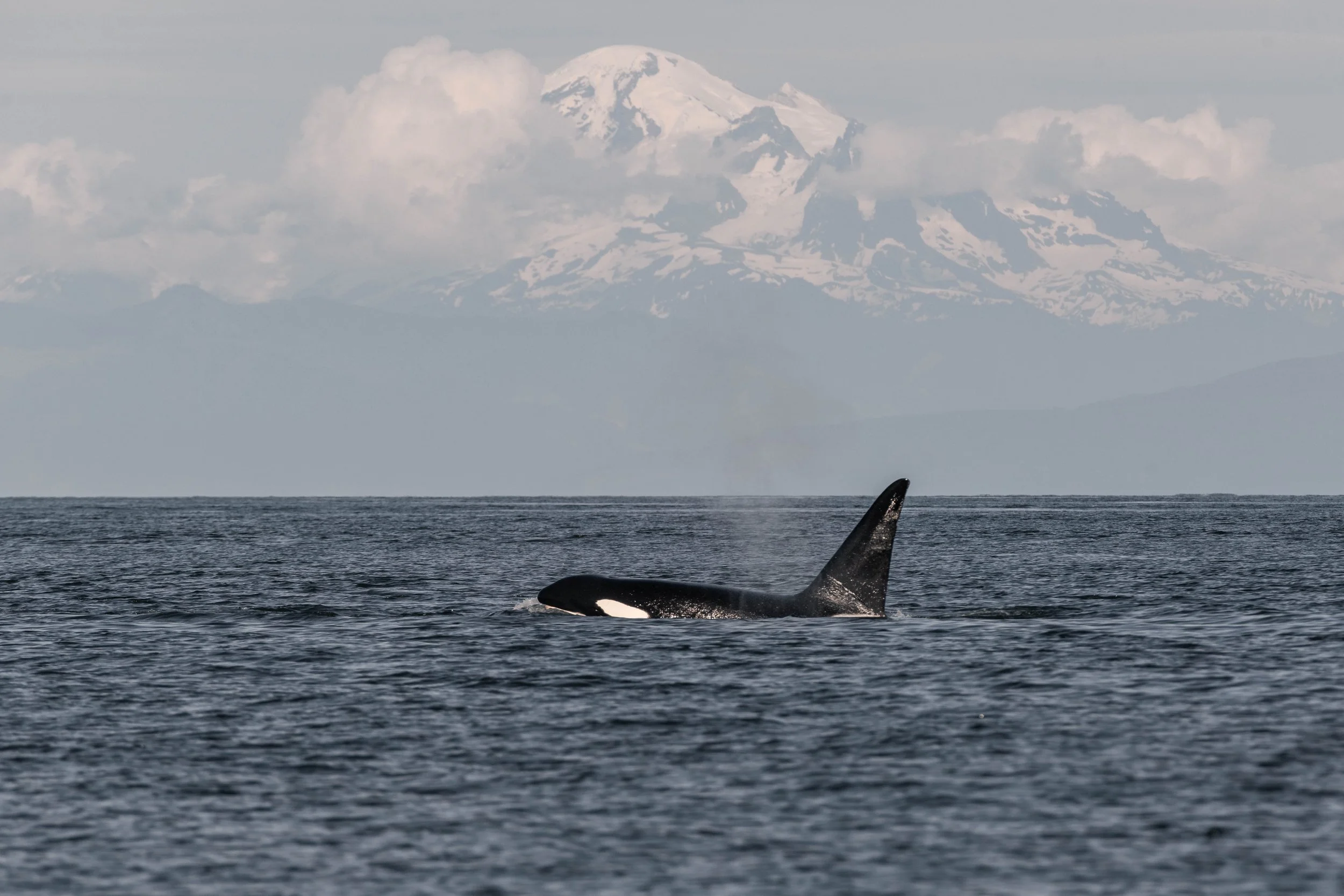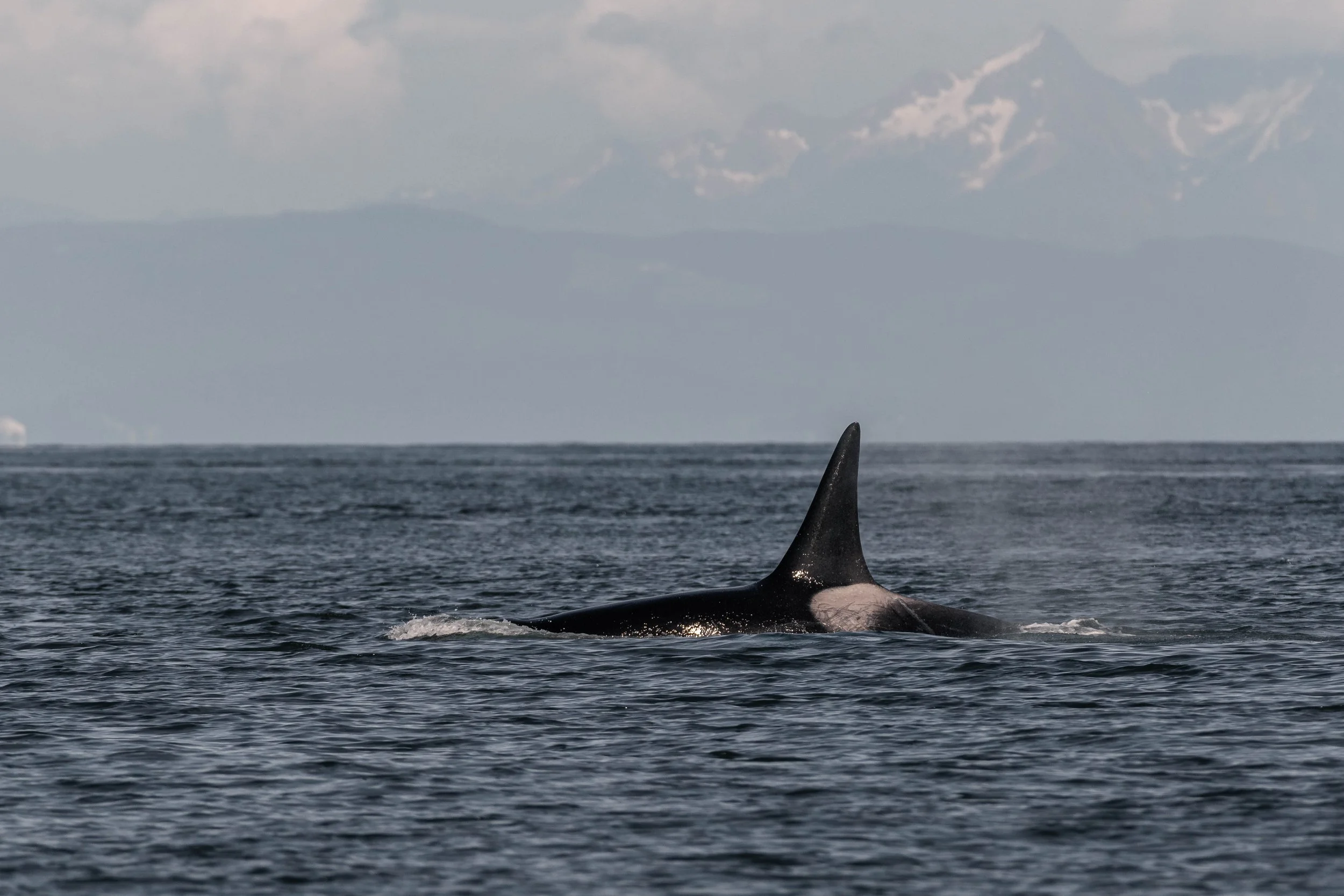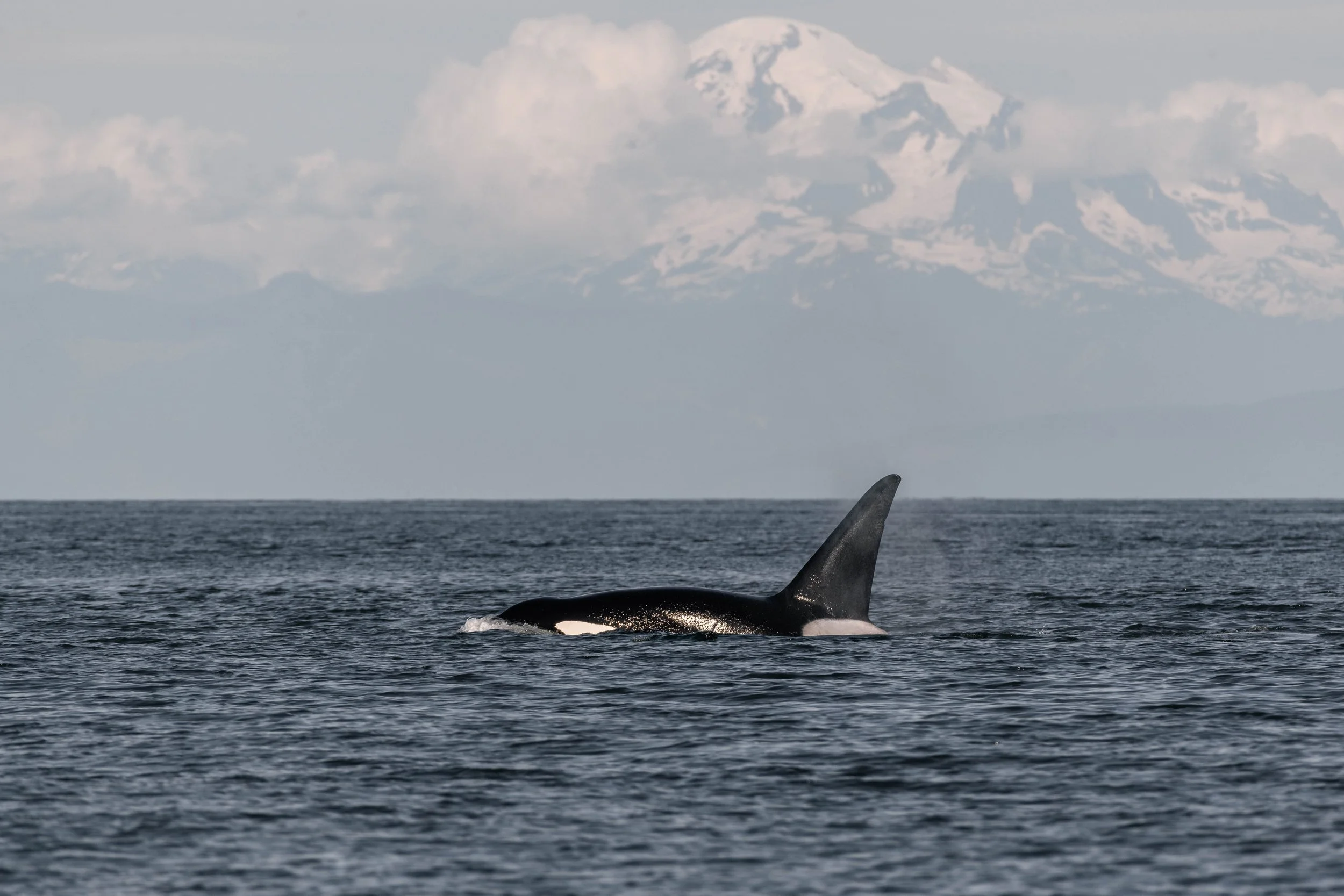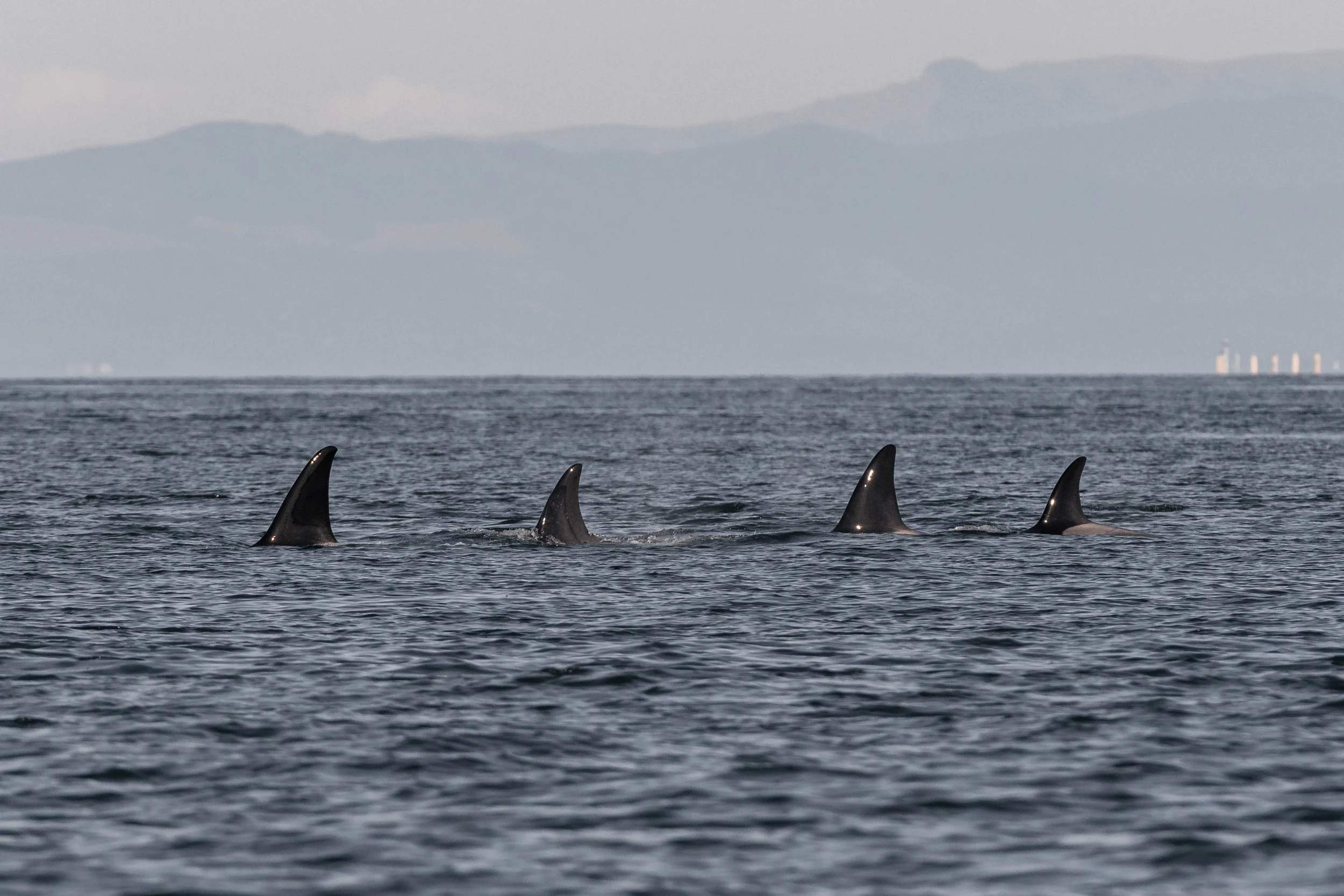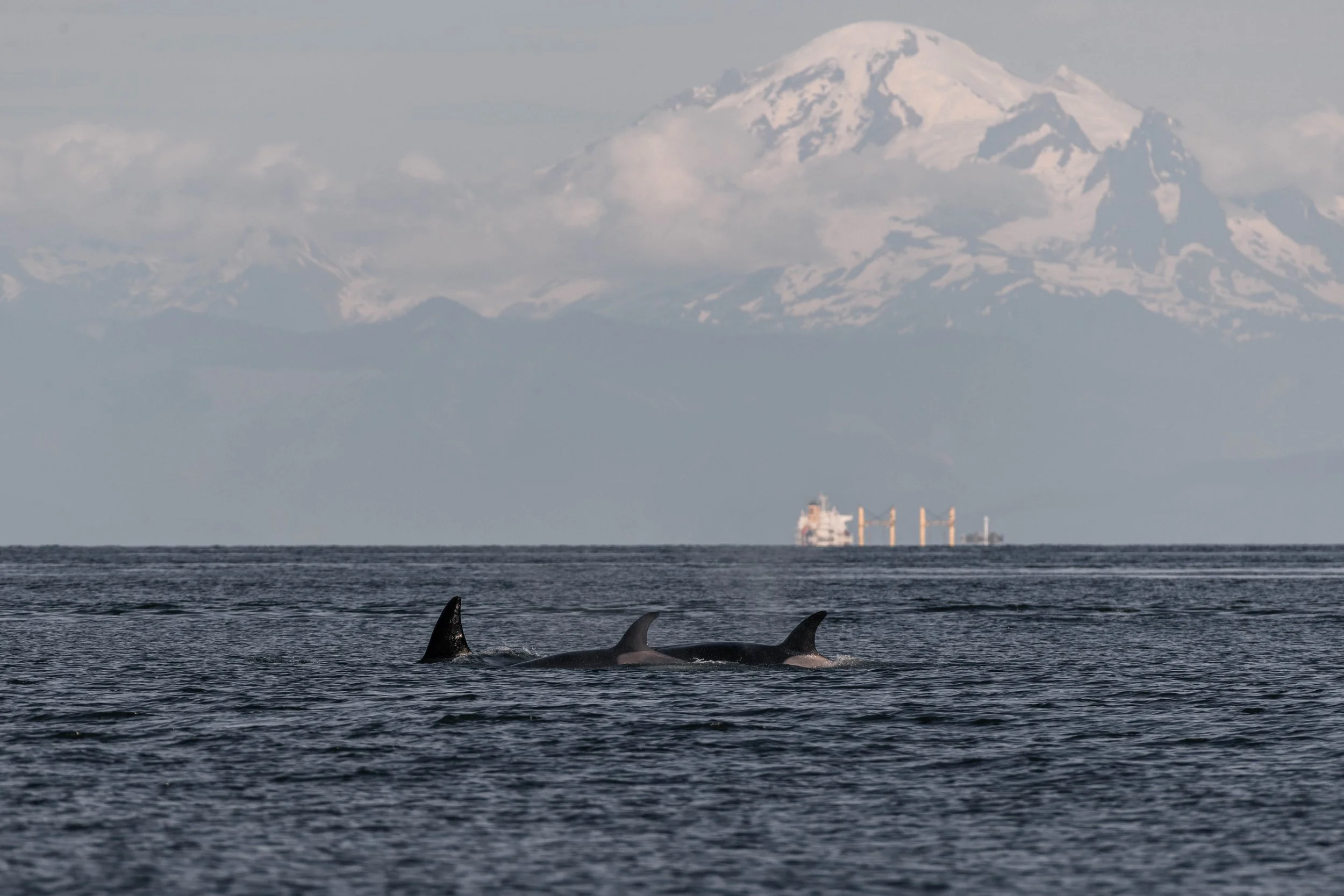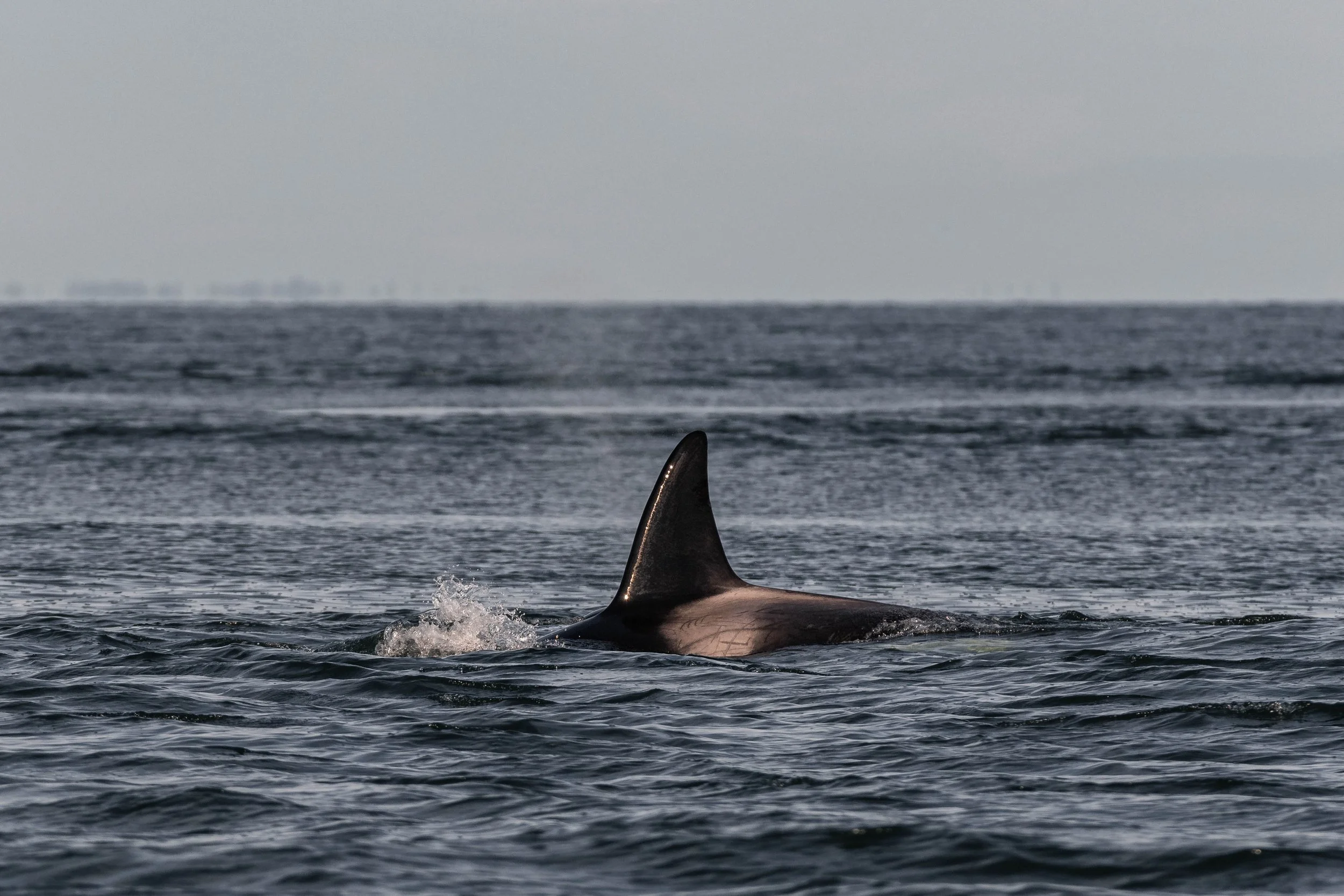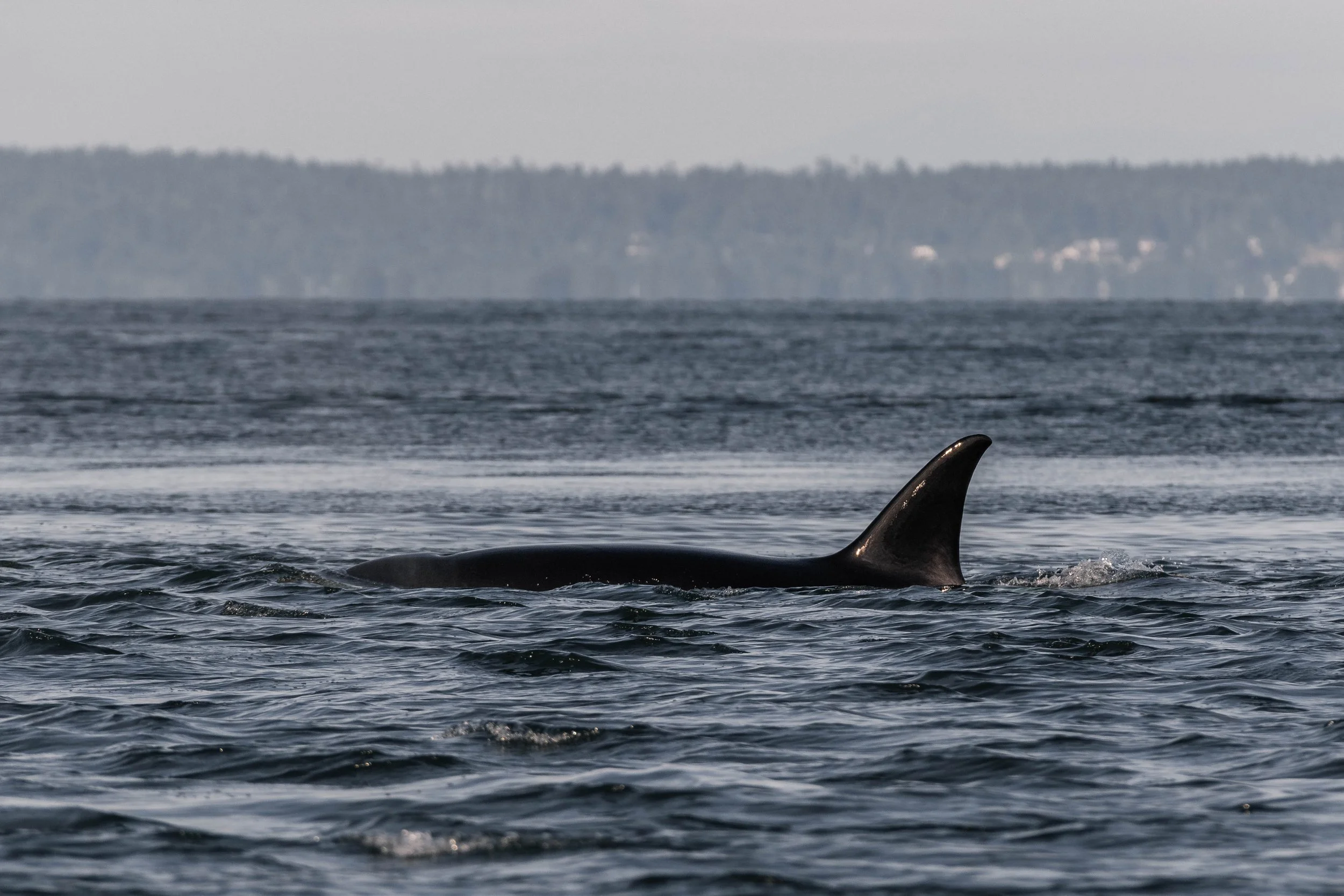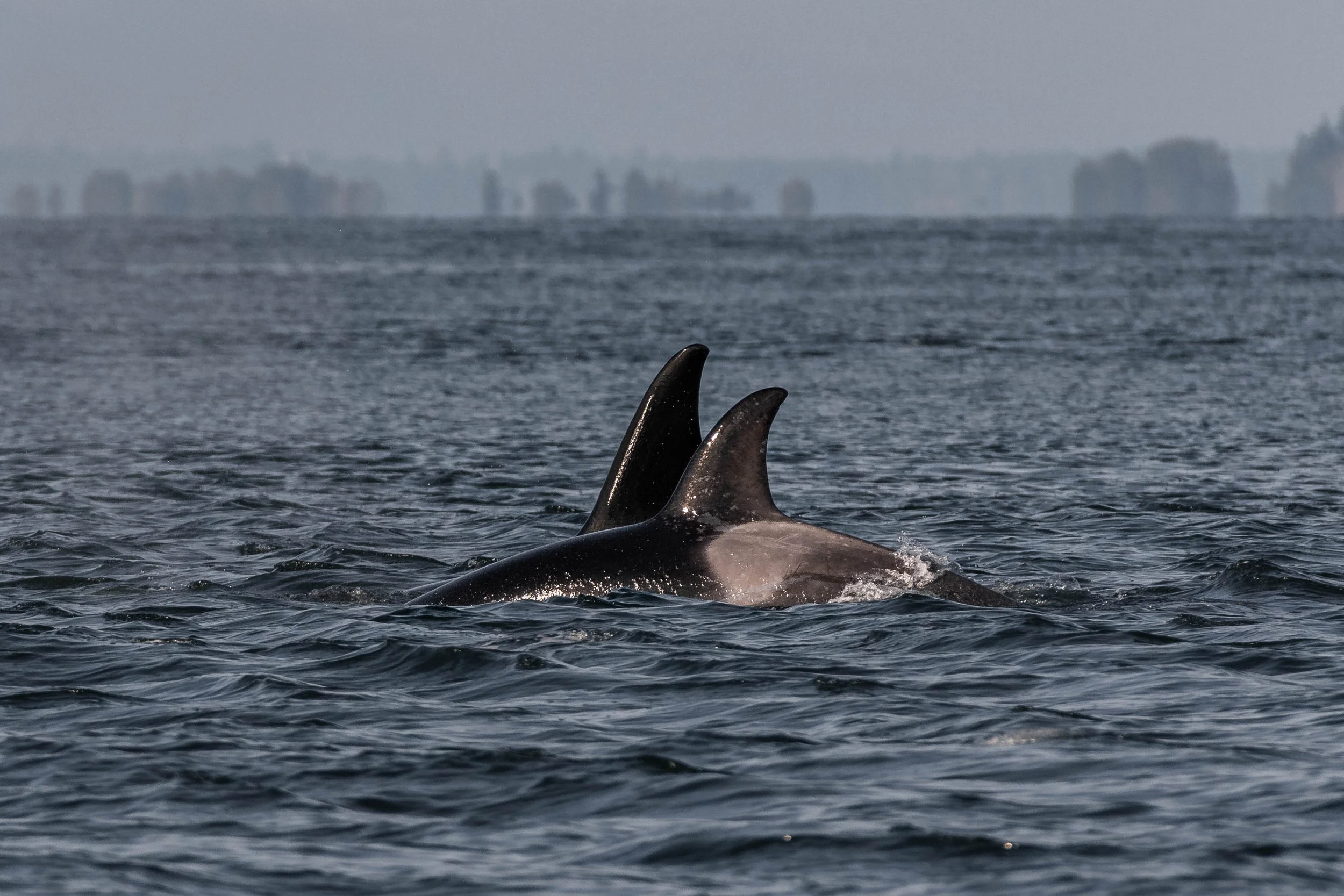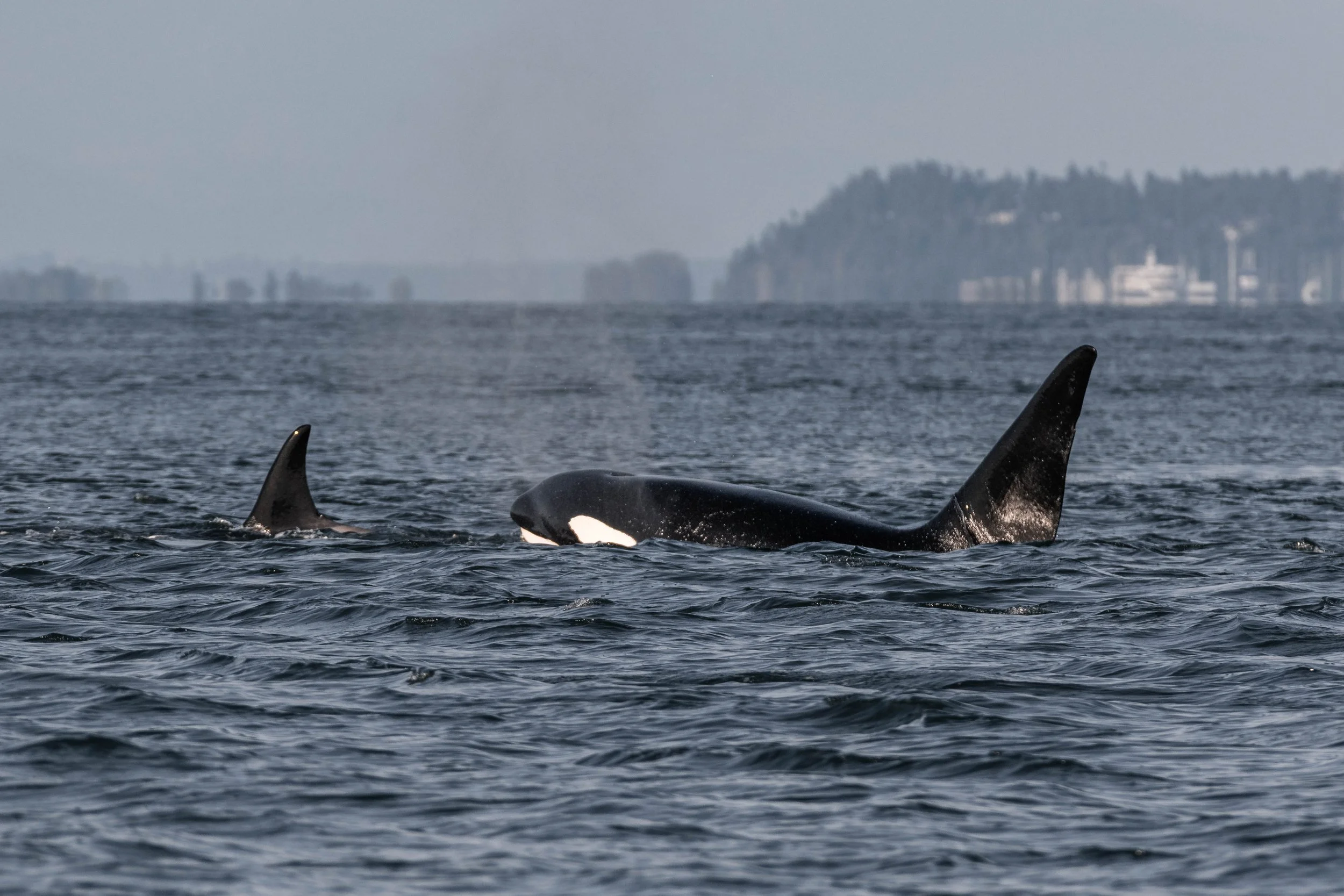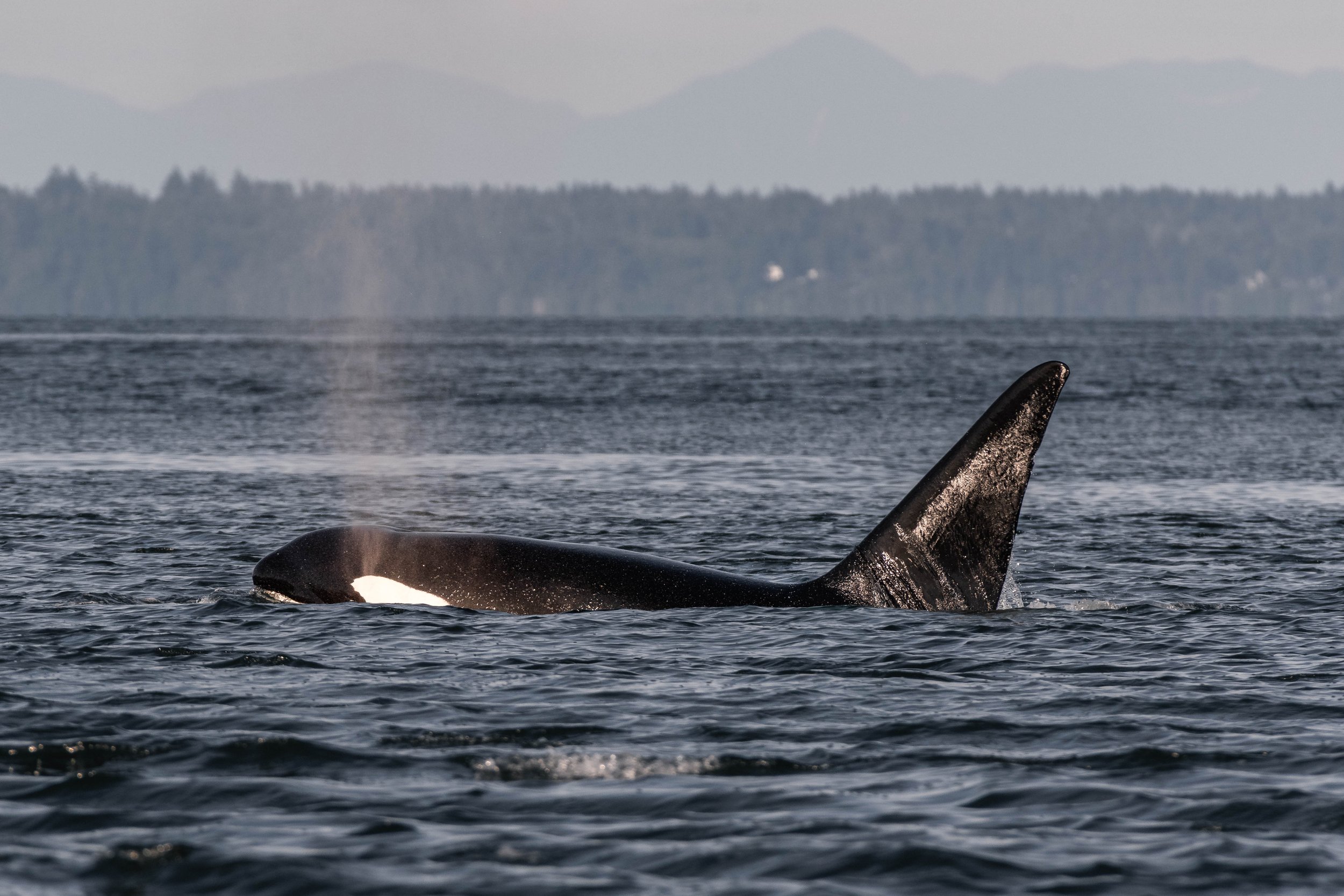July 5, 2025, 3:30 PM - A trio of humpbacks, and a pair of orca matrilines!
For this afternoon, we headed out on our open vessel, Cascadia, to search the open waters of the Strait of Georgia. We have had a lot of whale success just off of Nanaimo’s shores lately, so it’s been a popular place to start the trip’s searching. When we are out and about, we are always scanning for signs of whale activity - namely, blows, dorsal fins (fins on the top of the whales’ bodies), and flukes (tails). With no trackers or tags on any of our whales, you never really know where they will show up, so it’s important to be looking for these signs at every turn! We scanned and scanned, and after a bit of searching, we spotted our first group of whales!
While on scene, we originally thought there were only two humpbacks present - but after reviewing our photos, it turns out there was a sneaky third friend amongst them! We confirmed our humpback IDs by using a mix of photos of the underside of their flukes as well as their dorsal fins. Their fluke underside patterns are highly unique, and if we have whales that don’t cooperate and give us a less-than-ideal fluke angle, we can cross-match with their dorsal photos to solidify who they are. After reviewing our catalogues, we confirmed we were travelling with Smoke/Squirrel (BCX2183) and Chandelle (BCX2140) - with their sneaky third friend being ID’d as Pingu (BCY1110).
While we were watching this trio, one of the whales unexpectedly breached. Breaching, or the act of jumping out of the water, is an amazing behaviour that is also highly unpredictable - we can never truly tell when they will do it! Sadly, they only did it once, and we were unable to get a photo of it.
Breaching consumes an incredibly high amount of calories - meaning if the whales in our area are doing it, they are likely very well fed. While in the Salish Sea, our humpbacks are busily feasting as much as they can all summer and fall long, packing on the pounds in preparation for their long migration to Mexico or Hawaii. They rely on their fat stores to support them down to the breeding grounds and back, resulting in them needing to consume a year’s worth of food in a mere few months. Because of this, our humpbacks spend most of their time diving and feeding, sometimes consuming upwards of 1.5 tons (~3300 lbs or 1500 kg) of food every day. For reference, humans eat roughly 3-5 lbs/1.4-2.3 kg of food a day, or about 0.09-0.15% of a humpback’s daily caloric intake!
Once our time with Smoke, Chandelle, and Pingu was up, we continued on our way. Our next stop took us over to Stinky Rocks, a popular haulout for two of our prominent pinniped species - our Steller Sea Lions and our Harbour Seals. The tide was very high when we approached, so the area where the Harbour Seals usually snoozed was completely covered by water; however, our Steller Sea Lions were out in full force! An absolutely towering male Steller Sea Lion was shuffling along the edge of the rocks as we observed. His huge ‘mane’ was so thick and pronounced that he even had rolls down his back - now that’s a well-fed sea lion!
Steller Sea Lions have a harem breeding style, meaning one male tries to woo as many ladies as he can. The biggest, chunkiest males tend to do the best, as they can more easily fight off their smaller and leaner opponents. While Stinky Rocks is not an official rookery yet, we wouldn’t be surprised if this large male ends up dominating the rocks and we end up seeing some squishy sea lion pups here in the future!
Departing Stinky Rocks, Cascadia and her crew continue their search, eager to try and find some orca. They head south, skirting the Vancouver Island edge of the Strait of Georgia. Scanning and scanning, our hopes were high that we could locate some black and whites… and shortly after, there they were! Several black dorsal fins were popping out of the water, with two large male fins amongst the smaller whales.
Instead of using flukes to identify individual orca, dorsal fins, saddle patches, and sometimes eyepatches are used to ID them instead. Using this trio of resources, these eight were identified as the T065Bs and the T123s, two commonly sighted pods along our coast:
T065B Chunk ♀ (1993)
T065B1 Birdsall ♂ (2011)
T065B2 Nettle ♂ (2019)
T065B3 Rook ♂ (2023)
T123 Sidney ♀ (~1985)
T123A Stanley ♂ (2000)
T123C Lucky ♀ (2012)
T123D Darcy ♀ (2018)
These two pods were behaving in the most classic of orca fashion - travelling along, with occasional socializing between the individuals. At many times, the two matriarchs T065B Chunk and T123 Sidney were spotted nestled among the youngsters of the pods as they travelled along.
Orca can travel huge distances in a single day - sometimes more than 160 kilometres! That’s further than Nanaimo to Victoria! Can you imagine swimming that far in a day?
Besides travelling, orca also spend a lot of their active hours hunting and feasting. Each of our Transient orca need to eat between 200-500 lbs of food a day. This means, for a group of eight orca like today’s encounter, they need to hunt upwards of 10-13 seals every single day to keep their weight up - that’s a lot of hunting to do daily!
Eventually, it was time to say goodbye to the T065Bs and the T123s. Cascadia departed the scene and started to head back towards Nanaimo, wrapping up another wonderful day out on the water!
Please enjoy this trip’s photos taken by Marine Naturalist Aly Kohlman!
Chandelle’s dorsal fin.
Chandelle’s flulke.
Pingu’s dorsal fin.
Pingu’s fluke.
Smoke’s dorsal fin.
Smoke’s fluke.
A huge Steller Sea Lion male lounging amongst the crowded rocky shores.
Look at the size of this sea lion! Woah!
T123 Sidney with T123D Darcy.
T123A Stanley with Mt.Baker in the background.
T065B1 Birdsall.
T123A Stanley cruising along.
A look at some of the smaller fins! T123 Sidney, T065B Chunk, T123C Lucky, and T065B2 Nettle.
T123A Stanley.
T065B Chunk, T065B3 Rook, and T065B2 Nettle.
Upside down and frolicking!
T123 Sidney and T123D Darcy.
T123C Lucky.
T123 Sidney.
T065B1 Birdsall with a large newer gash in his saddlepatch.
T123 Sidney with her youngest calf T123D Darcy.
T065B Chunk with T123A Stanley right behind her.
T123A Stanley with his face above the water!
T065B Chunk.

